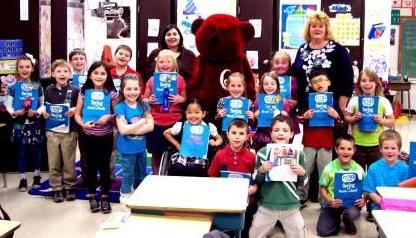Innovative curriculum focuses on banking fundamentals, basic money skills and savings principles

CLEARFIELD – During the 2013-14 academic school year, CNB Bank continued its tradition of teaching students the importance of financial literacy.
To date, more than 2,390 high school students in 24 schools in the CNB Bank market area have taken the “How To Do Your Banking” program. In addition, more than 1,360 elementary students in 45 schools in the CNB market participated in CNB’s “Saving with Mandy and Randy” program.
According to a survey by The Hartford Financial Services Group Inc., only 24 percent of students polled felt they were prepared to deal with the financial challenges that await them, and about 76 percent of those students said they wish they had more help in learning to handle their personal finances. Polls such as this prompted CNB to step in and help area schools with the critical task of providing financial literacy programming for their students.
Both programs focus on financial literacy and were first introduced to area students by CNB Bank in 2003. “How to Do Your Banking” uses interactive video to teach high school students the value of good credit, how to determine their own capacity to borrow and repay and what they can do as young adults to build a good credit history.
“Saving with Mandy and Randy” is aimed at second graders and focuses on basic money skills and saving principles. Students learn vocabulary words related to savings, identify and count coins, add and subtract dollars and cents, complete activity sheets and practice savings skills, even completing deposit tickets for savings accounts. For each program, a bank representative is in the classroom, available to support the teacher, facilitate discussion and answer questions.
“We are dedicated to the markets we serve and understand that financial literacy results in more stable communities,” explained Joseph B. Bower Jr., CNB Bank president and chief executive officer.
“Research shows that young people’s attitudes about handling money are determined by the time they finish fifth grade. As the area’s leading community bank, we are committed to working with our schools to provide students with the tools they need to become fiscally responsible adults.”


